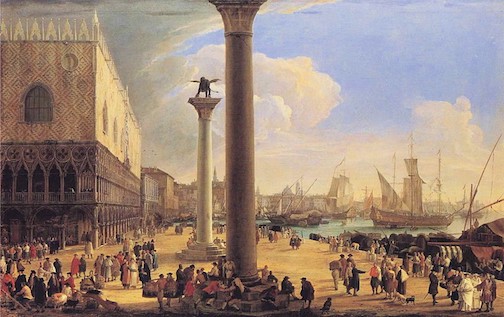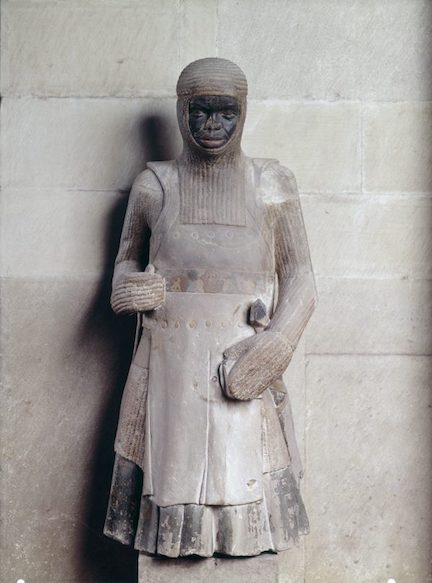History
“Whereas huge shipments of grain used to arrive by ship annually in this city [of Venice], now they arrive laden with slaves, sold by their wretched families to alleviate their hunger. An unusually large and countless crowd of slaves of both sexes has afflicted this city with deformed Scythian faces, just like when a muddy current destroys the brilliance of a clear one.”[3]
Petrarch (1304-74), 1360s
Petrarch’s racist description of Black Africans had long roots in Western thought. The ancient Greek historian Herodotus (c. 484 – c. 425 BC) described inhabitants of the Great Sahara in far western Libya, as “creatures without heads whom the Libyans declare to have their eyes in their breasts.” The Sicilian historian Diodorus Siculus (c. 90 – c. 30 BC) derided Ethiopians in terms of both body and soul: “The majority of them . . . are black in colour and have flat noses and woolly hair. As for their spirit, they are entirely savage and display the nature of a wild beast . . . and are as far removed as possible from human kindness to one another; and speaking as they do with a shrill voice and cultivating none of the practices of civilized life as these are found among the rest of mankind, they present a striking contrast when considered in the light of our own customs.”[4] These writers provide insights into how Europeans viewed Black Africans in a changing society and in the depictions of them in works of art. In the Middle Ages, slaves were owned, given as gifts, traded—and occasionally bought to be freed—as primary sources from the period attest. These individuals had likely been prisoners of war, sold by their families to pay off debts, or captured in raids on non-Christian settlements.[5]
An increase in the number of enslaved Africans in the eleventh and twelfth centuries was inspired by the Almoravid conquest of Spain.[6] In 1444, Lancorote de Freit captured 225 to 235 African captives from the Guinea coast. These events led to the papal justification of 1452, when Pope Nicholas V’s decree Dum diversas granted King Don Alfonso V of Portugal the authority to enslave non-European “pagans.”[7] In the following years, Prince Henry of Portugal sent captains to explore the coasts south of the dreaded Cape Bojador.[8] Henry was motivated by a curiosity about whether or not earlier legends and stories about Cape Bojador were in fact true; a desire for increased trade in order to feed the expanding economy of Europe at the end of the Middle Ages; a thirst for an increasingly larger and stronger military; a search for “Christian allies” and souls to convert.[9] Acts inspired by these aspirations resulted in an influx of enslaved Africans to Portugal and Spain, and the later expansion to the north and the south of Europe.
Between 1439 and 1441, Ethiopian and Egyptian churches sent representatives to the council in Florence, and African pilgrims and scholars made their way to Rome.[10] An effect of religion, diplomacy, and commerce was that contact between Africa and Europe was significant, if not necessarily constant. As late medieval and early Renaissance artists gained latitude for personal artistic expression in their works, they began to increasingly introduce original elements, including black figures. One figure of consequence was St. Maurice (Lat. Maurus = Moor), a third-century Roman commander from Thebes in Egypt, who was martyred for his Christian faith. A third-century Christian convert, he was martyred in what is now Switzerland and became widely revered in Germany and surrounding lands of Magdeburg, where representations began to appear more frequently. An example in German art is the Statue of the Black St. Maurice of Magdeburg (c 1240) (Fig. 1), which depicts the sculpted features of Maurice’s face and the coloring unambiguously identify him as a Black man, but this is no demeaning caricature. The lifelike statue is fitted as an admirable medieval warrior armed with his spear and headgear. While northern artists usually represented St. Maurice with the features of a Black African, Italian artists usually depicted him as white. Both approaches suggest the assimilation of dark-skinned people into the Christian faith, thereby neutralizing the threatening Other. St. Maurice is not the only theme through which this assertion is made, as will be seen in a discussion of the Adoration of the Magi.


